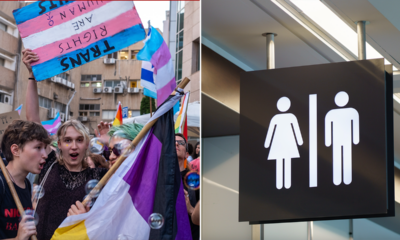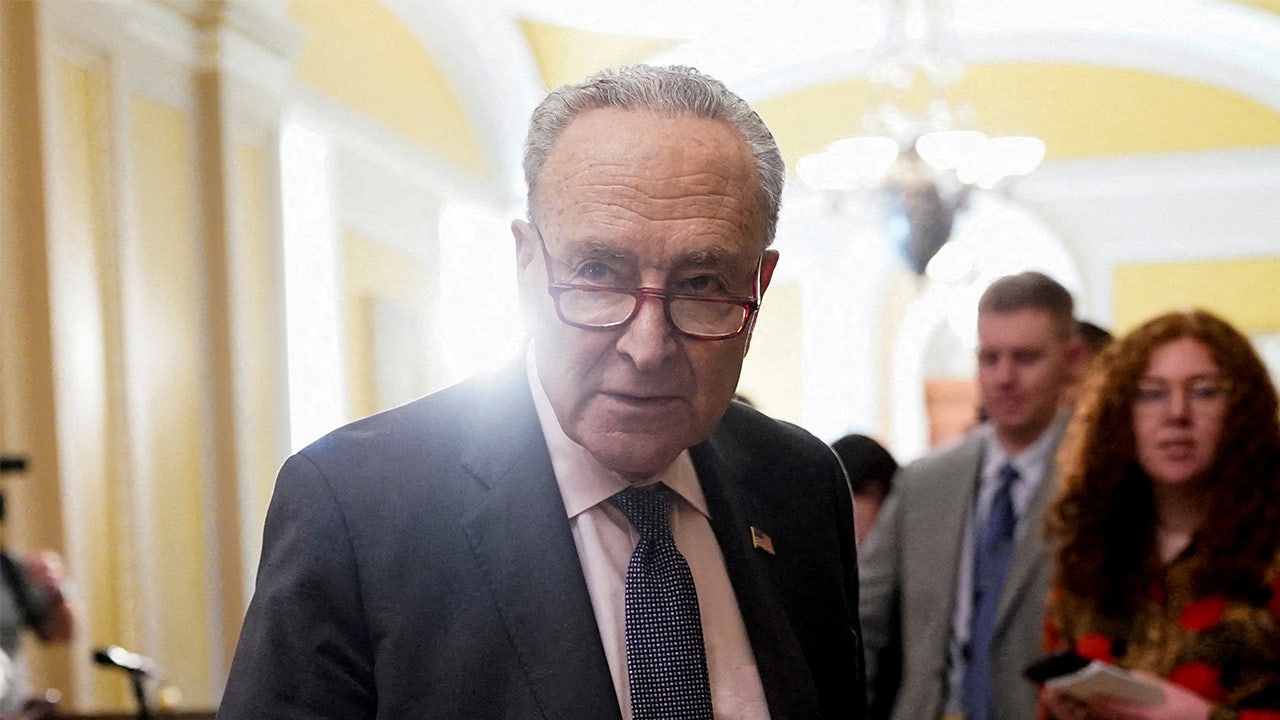Finance
Balancing climate finance and financial stability is a scorching dilemma | East Asia Forum

Author: Editorial Board, ANU
Asia has been sweltering through one of its most intense heat waves in memory. In April, Vietnam and Laos saw their hottest temperatures on record, and in India hundreds have died in extreme heat conditions. Elsewhere, there are ominous signs. The North Sea is five degrees hotter than normal and the Baltic Sea eight degrees hotter. A heat dome over Texas and Mexico has baked the region for weeks. Climate change, in other words, is most definitely here. The need for urgent action worldwide has never been more obvious.
And yet even as the atmosphere races ahead of the climate models, and the need for urgent action intensifies, ambition and implementation lag behind. The United Nations Environment Programme’s 2022 climate report was ominously titled ‘The closing window’. It argued forcefully that the world is letting the chance to meet the Paris Agreement goal of only 1.5 degrees of warming slip through its hand.
The science is unequivocal: action must be ramped up dramatically. Easier said than done, comes the reply from diplomats and policymakers. The fundamental problem is the same as it has been since the climate change emergency was first identified: cutting domestic carbon emissions benefits the entire world, but the costs are borne solely by the country who cuts them. Without a worldwide carbon price, many countries are likely to shirk.
In recognition of this fact, there has always been an acknowledgment that developing countries will require assistance to meet emissions reductions targets, in the form of climate finance from developed countries. The sums are considerable. Nicholas Stern and Amar Bhattacharya estimate that US$1 trillion of climate finance will be required annually by 2030, more than three times current levels.
At the same time, the macroeconomic environment for massive spending on the scale required is darkening. Interest rates are rising, inflation remains stubbornly high and the legacy of COVID-19 borrowing weighs heavily on the balance sheets of governments around the world. Corralling the necessary money from donor countries to finance ambitious action in developing countries will be difficult.
But if getting the money from donors is a challenge, there is also a major — and underappreciated — problem for recipient countries, one that has been illustrated and underlined by recent developments in the global economy.
An open door for foreign investment swings both ways. The rise in interest rates in the West has seen capital flow from developing countries back into developed ones, where the rate of return is now more respectable. This has put pressure on exchange rates and exacerbated the debt problems of many developing countries that cannot borrow in their own currency.
The need for financial stability is acutely felt by policymakers and central bankers in the developing world, particularly in Asia, where memories of the Asian Financial Crisis are still strong a quarter of a century later. Given that the massive amounts of money required for climate change action cannot realistically be met by domestic savings in most developing countries, taking effective action means importing capital, and hence increasing currency account deficits.
As M Chatib Basri and Adam Triggs argue in this week’s lead article, the tension between prudent macroeconomic policy on the one hand and financing effective climate action on the other has the potential to derail efforts to avoid catastrophic global warming. ‘If developing countries are to import the foreign savings needed to fight climate change’, they point out, ‘the rich world and the institutions it controls will need to work with them to reduce financial instability’.
There are a number of steps that can be taken, as Basri and Triggs note: international and regional financial institutions need to be reformed so that countries can more effectively make use of the financial security that they can offer; institutions themselves need to ensure that their own resources are more effectively marshalled to guarantee stability in the face of massive flows of climate finance; and rich countries can continue to make new arrangements like bilateral currency swap lines to ensure that the financial safety net is sufficient to facilitate a huge ramp-up in international capital flows to address climate change.
It may not seem immediately obvious that a pressing concern in fighting climate change is addressing the global financial architecture. But the institutions and rules that make up that architecture will be called upon to support a truly unprecedented flow of money from rich to poor countries. It is a pressing task for policymakers to ensure that they are fit for the task.
The EAF Editorial Board is located in the Crawford School of Public Policy, College of Asia and the Pacific, The Australian National University.

Finance
Mag 7 takes on ‘growth as defensive’ bias, strategist says
Finance
Trump executive order threatens small business lending in Philadelphia

While most of the CDFI fund appears to be protected by Congress, Hinkle Brown said he’s concerned that the rules won’t apply.
“It’s unclear what overzealous implementation in this regard would look like,” he said. “If they eviscerate and make non-functional the CDFI fund there’s a lot of costs, the Philly region will suffer.”
It could put a dent in regional economic development efforts in low income communities, said Leslie Benoliel, CEO of Entrepreneur Works in Philadelphia.
“[Community Development Financial Institutions] are like the capillaries of the financial distribution system in our country. And if you cut off the blood flow to those extremities, that will cause enormous harm,” Benoliel said.
Small business owners who may not typically trust the banking system or government often will work one-on-one with a community organization, she said.
CDFIs across Pennsylvania were allocated $32 million under financial assistance, healthy foods and persistent poverty county financial assistance awards last year.
If there’s no federal support, local nonprofits will likely have to raise money another way, said Varsovia Fernandez, CEO of the Pennsylvania CDFI Network.
“There is a possibility of moving to a fee for services model where small businesses need to pay to receive technical assistance education and I would imagine [loans would have] a higher rate to be sustainable,” she said. “I am hoping that it’s not a drastic change what the White House ends up doing.”
On March 17, U.S. Treasury Secretary Scott Bessent said in a statement that the Trump administration understands the significance of the federal fund and local community lending organizations.
“CDFIs [Community Development Financial Institutions] are a key component of President Trump’s commitment to supporting Main Street America in the pursuit of job growth, wealth creation and prosperity,” Bessent said.
Finance
Stock market today: Dow, S&P 500, Nasdaq futures rise in search for another bounce-back week
US stock futures rose Sunday, as the major indexes looked for another week of gains toward the end of a rough month and quarter.
Futures attached to the benchmark S&P 500 (ES=F) rose 0.6%, with Nasdaq 100 (NQ=F) futures up 0.7%. Futures tied to the Dow Jones Industrial Average (YM=F) advanced around 0.4%.
As of 9:22:10 PM EDT. Market Open.
ES=F YM=F NQ=F
Tariffs continue to demand investor attention, as the April 2 deadline approaches for President Trump to enact reciprocal duties. Trump indicated on Friday that he is maintaining “flexibility” in relation to the tariffs’ rollout, but he hasn’t given a firm idea of what that would look like.
Other concerns for Wall Street include considerations over whether the year-to-date losses have only been a slowdown blip — or if the economy is heading into a recession. JPMorgan strategist Bruch Kasman, for one, pegs the chance of recession as high as 40%.
On the earnings front, quarterly results from Lululemon (LULU), Gamestop (GME), and Dollar Tree (DLTR) are all due this week amid a slower week of financial releases.
Looking at economic data for the week to come, a reading of the Fed’s preferred inflation gauge, the Personal Consumption Expenditures Index, is due Friday. The PCE comes alongside a treading of the University of Michigan’s consumer confidence survey, as well as updates to Purchasing Managers’ Indexes for the manufacturing and services sectors.
Coming soon
Stock market coverage for Monday, March 25, 2025.
-

 Midwest1 week ago
Midwest1 week agoOhio college 'illegally forcing students' to share bathrooms with opposite sex: watchdog
-

 News1 week ago
News1 week agoFor Canadians Visiting Myrtle Beach, Trump Policies Make the Vibe Chillier
-

 News6 days ago
News6 days agoTrump Administration Ends Tracking of Kidnapped Ukrainian Children in Russia
-

 News6 days ago
News6 days agoVance to Lead G.O.P. Fund-Raising, an Apparent First for a Vice President
-

 News1 week ago
News1 week agoArlington National Cemetery stops highlighting some historical figures on its website
-

 News1 week ago
News1 week agoBlack Lives Matter Plaza Is Gone. Its Erasure Feels Symbolic.
-

 Movie Reviews1 week ago
Movie Reviews1 week agoPerusu Movie Review: Mourning wood provides comedy that won’t go down in history
-

 Politics1 week ago
Politics1 week agoHouse Democrats to hold 'Day of Action' to push back against GOP-backed spending bill




















